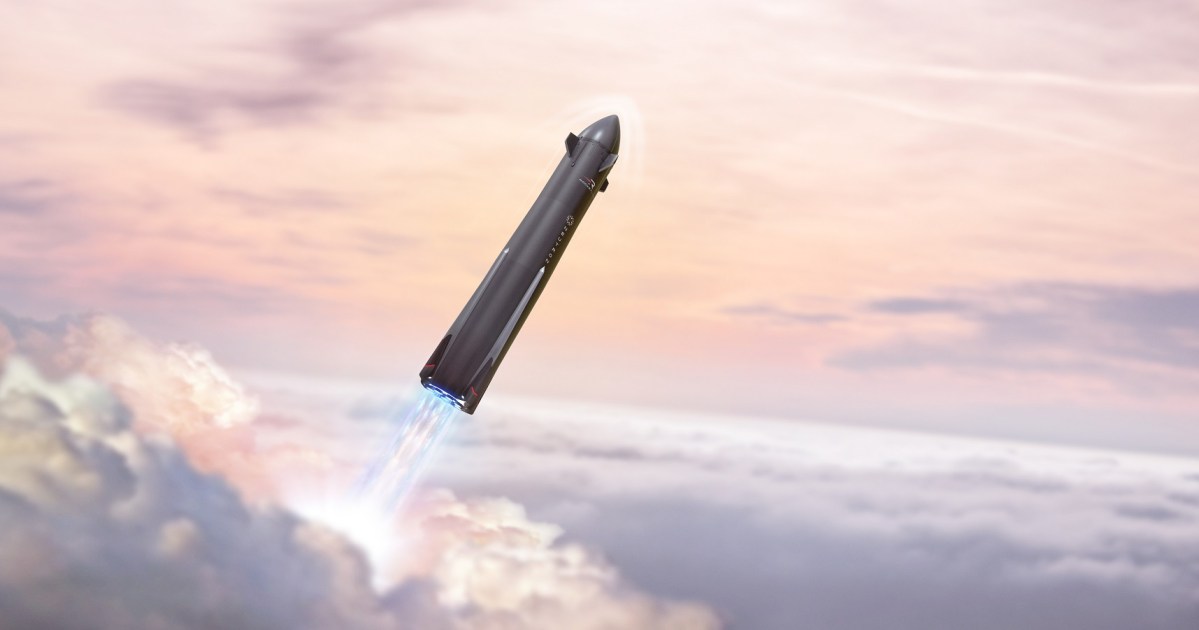WASHINGTON — NASA has awarded a contract to Rocket Lab to study alternative concepts for Mars Sample Return (MSR), joining several other efforts to improve the cost and schedule of the program.
Rocket Lab said Oct. 7 that it received a contract to study what it called “a simplified, end-to-end mission concept” for MSR that would deliver samples being collected by the Perseverance rover to Earth for a “fraction” of currently projected costs, estimated to be as high as $11 billion, and several years earlier than 2040.
NASA solicited concepts for industry studies to look at alternative architectures for MSR or key elements of it, like the Mars Ascent Vehicle (MAV) rocket that will launch the collected samples into orbit around Mars. NASA selected seven companies in June for those studies, but Rocket Lab was not among them.
The Rocket Lab statement came after a Sept. 27 entry in a federal procurement database, which noted that the company received a $625,000 contract from NASA for Mars studies. NASA did not announce at the time, or since then, the selection of Rocket Lab for a contract.
“Rocket Lab was not included in the initial study concepts selected by NASA in June 2024, but Rocket Lab’s proposal was later re-evaluated by NASA and selected for a study contract as it closely aligned with the solicitation’s stated focus on innovation,” Rocket Lab said in an Oct. 7 statement to SpaceNews.
“All of the companies chosen submitted their proposals through the original ROSES solicitation and the addition of one more company will not delay the evaluation of the studies,” NASA said in a statement to SpaceNews Oct. 7 in response to inquiries about the Rocket Lab award Oct. 3 and 4. “NASA’s selection process allows for later additions at the selecting official’s discretion.”
Rocket Lab did not provide details about its concept for MSR in its announcement. “We’ve developed an innovative mission concept to make it happen affordably and on an accelerated schedule,” Peter Beck, chief executive of Rocket Lab, said in the statement about the study. “Rocket Lab has been methodically implementing a strategy for cost-effective planetary science in recent years, making us uniquely suited to deliver a low cost, rapid Mars Sample Return.”
However, NASA published abstracts of the proposals through a website used for the study solicitation. In the case of Rocket Lab, the company pitched an architecture that would use the company’s Neutron rocket in development along with other spacecraft projects.
“Rocket Lab will reduce cost and schedule for MSR through a simplified mission, targeting a total to NASA of less than $2B,” the company stated. “Rocket Lab will challenge the program to hit a 2028 launch window to reduce costs while reducing risk associated with Perseverance lifetime, resulting in return of samples no later than Sept. 2033, with the potential for earlier return in Sept. 2031.”
That architecture calls for two Neutron launches about two weeks apart, one carrying an Earth Return Orbiter (ERO) spacecraft and the other a lander with MAV. Perseverance would rendezvous with the lander, and a robotic arm would take samples from the rover and place them in the MAV to launch into Mars orbit, where the ERO would collect them for return to Earth.
“Rocket Lab has demonstrated the experience and technical capabilities aligned with MSR and has assembled a team with the experience and skills to not only conduct a study of low cost, rapid MSR but also to execute on the mission once awarded,” the company argued, citing its work on the CAPSTONE lunar mission, Varda’s spacecraft that returned experiments from Earth orbit to the surface and the ESCAPADE Mars smallsat mission.
The document also offered details on the seven earlier awards. Some awardees discussed their studies at a conference in July, but others have said little or nothing about the studies they were selected to perform.
Blue Origin, for example, said it is leveraging its “commercial capabilities” and NASA support for its Blue Moon crewed lunar lander through the Human Landing System program. “Applying these capabilities to MSR removes the constraints on mass and volume that have greatly limited past MSR architectures, allowing for a mission design that reduces complexity and cost, and maximizes the number and scientific value of samples returned,” the company stated.
Aerojet Rocketdyne, an L3Harris company, said it is looking at ways to reduce the mass of both the MAV and its lander. That could allow the lander to use the existing “skycrane” landing technology demonstrated with the Curiosity and Perseverance rovers, lowering costs, the company argued. The Jet Propulsion Laboratory, which has its own MSR study, is also looking at ways to use skycrane technology for the lander.
The SpaceX abstract confirmed the company is looking at using its Starship vehicle, but offered few technical details. “SpaceX will work together with NASA to evaluate a series of options for how to best leverage Starship’s capabilities to jointly meet the goals set out for NASA’s Mars Sample Return program,” the company stated.
The studies are due to be completed this fall, with the agency using them, along with internal studies and those by JPL and the Applied Physics Lab, to determine how to alter the current MSR architecture to reduce its cost and speed up the return of samples. Speaking at a meeting of the NASA Advisory Council Oct. 1, Administrator Bill Nelson expressed optimism about those efforts without going into details about the studies.
“We think it’s looking very promising that we can end up at a much cheaper Mars Sample Return and we can do it a lot quicker than what was proposed before,” he said.
